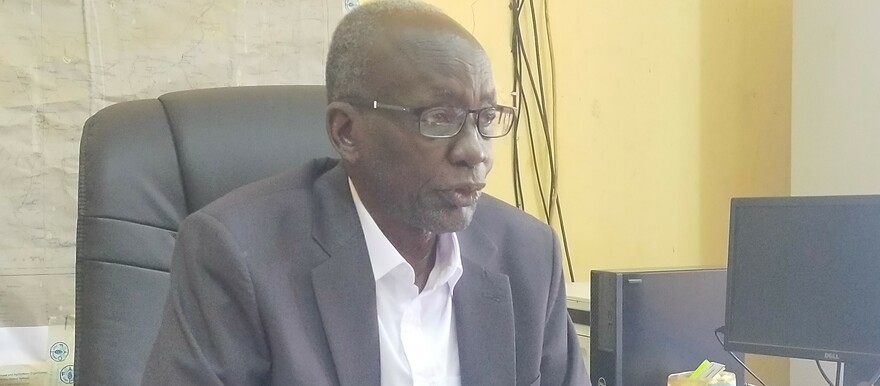The South Sudan National Bureau of Statistics on Thursday said that the Population Estimates Survey (PES) which was released last week will not be used for the elections scheduled for 2024.
Addressing a press conference in Juba, the chairperson of the National Bureau of Statistics (NBS), Isaiah Chol Aruai, said the survey report will be used for development, planning, and decision-making in the provision of services, monitoring the performance of the National Development Strategy as well as the sustainable development goals, drafting policy briefs and reference points for research.
Last week, the National Bureau of Statistics released a new Population Estimate Survey which assessed the country’s population at 12.4 million.
According to the estimates, Warrap State has the highest population in the country with 2,639,484 people while the Abyei Administrative Area has the lowest population with 133,958 people.
The PES report sparked debate public debate with many people saying it was not accurate and meant for political machinations.
However, responding to those who disparaged and questioned the population estimates and the methodology used to arrive at them, NBS Chairperson Chol said the PES is meant for planning purposes not for elections, and that the conduct of a population census hinges on a political decision.
“This idea of the survey which we have done came as a result of the fact that the information we have from 2008 (census) was outdated, it was not going to help us in the planning in service delivery so we agreed with UNFPA to undertake this PES and this was intended to give us some experience,” he explained. “The issue of the census is a political decision, it is not a technical nor even an administrative decision. It is political and if the political leaders today say conduct the population and housing census, we will do it on condition that there has to be peace and stability and security within the country.”
For his part, Biong Deng Kuol, the Chief of Demographic Statistics at the NBS defended the population estimate of Warrap State, saying the state has been stable and has had no displacement.
“The survey was based on a sample which means anything based on sampling and you will not get accurate information but you will get an estimate. Warrap State is the highest and we are not surprised because in the 2008 Census when the mapping was done, the enumeration areas that people were being enumerated was high in Warrap,” he said. “Warrap was having the highest enumeration areas all over South Sudan that is why I am saying we are not surprised about that results.”
“The other thing is that compared to other states in South Sudan, Warrap is one of the most settled or peaceful states and the people do not move too much so that is why I think that is what gave Warrap the highest results,” Deng added.
However, Augustino Ting Mayai (Ph.D.) in the Sudd Institute’s Weekly Review released on Tuesday, opined that the PES cannot be used for planning, development, and decision-making among other things because they are not concrete.
“…The PES results are useful for neither of the government exercises-politics and development. This is because some of the estimates are demographically impossible to ascertain,” Ting wrote. “Since there are divergent views regarding both the 2008 census and the 2021 PES estimates, the most sensible action would be to expedite the conduct of a credible census before the next general elections.”
According to Ting, the annual rate growth varies across states, with extreme highs in Warrap (14.2%) and Northern Bahr el Ghazal (12.8%) and lows in Jonglei (-1.9%) and Upper Nile (-1.4%).
“There are two sources of growth. The first is migration, with a difference between inflows and outflows forming net migration. The second comes from natural processes—birth and death; the difference between the two forms a rate of natural increase. Thus, for a population of a place like Warrap to nearly triple in 13 years (2.85 times), these two or one of the processes must occur at an unprecedented rate, which the recent exercise places at 14.2% annually,” he argued. “Now, this invokes the following assumptions. First, a massive internal migration is assumed to have occurred due to war, largely benefiting Warrap and Northern Bahr el Ghazal. Yet, considering the available evidence, this assumption cannot be plausibly sustained.”
Ting says that indeed there has been mass displacement in the Upper Nile Region, explaining growth deficits estimated there but informs that the displaced millions from these other two regions due to the conflict and extreme floods since 2019 have mostly migrated to neighboring countries.
“About half a million people have been displaced by floods in South Sudan in each of the last 4 years, mostly in Jonglei, Unity, Upper Nile, and Warrap States, among others,” he postulates. “The displaced from some of these states have mostly migrated to Equatoria and neighboring countries.”
Ting writes that the second assumption is that Warrap’s attendant high birth rates have been met with tremendous improvements in living standards over the last 13 years, drastically improving life expectancy in the state.
“Again, this assumption is not just flawed; it is bizarre to think so. Warrap remains one of the country’s poorest states, and one of the most dangerous places for children and mothers. Several reports bear witness to this claim,” he wrote. “For example, 57% of Warrap citizens faced worse acute food insecurity in 2022 and a 2017 study indicates that the infant mortality rate for Warrap is ‘twice the infant mortality rate for South Sudan’, adding that the state’s maternal mortality rate is 60% above the national average. Lastly, well over 60% of Warrap’s population lived below the poverty line at independence, escalating in subsequent years.”




